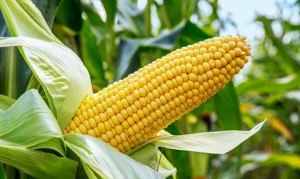Lab-grown meat is meat grown from an animal’s (stem) cells in a laboratory.
Cells come together to form tissues in higher animals, and tissues come together to form organs, and organs form systems which make up the organism.
Cells are the simplest units or form of life (animal cells are turned into stem cells using a technique called Pluripotency).
A few cells in a nutrient medium of amino acids, sugars and other minor food additives, multiply in a petri-dish, as they would in a living animal, and are ready for harvesting in four to six weeks.
It is possible to grow the meat of millions of cattle from one single cow using this technology.
The cells are fed by the nutrient medium as a live animal, like a cow, is fed by the grass it eats and digests.
It is, therefore, real meat, say promoters of this technology. On a large scale, cultured meat is grown in bioreactors.
Lab-grown meat, sometimes called cultured meat, cultivated meat, or cell-cultivated meat by US Department of Agriculture, USDA, can now be cooked and served in people’s dining tables, hotels, restaurants and other public places in the United States.
The approval is for two American lab-grown meat companies: Upside Foods and Good Meat, and is for cell-cultivated chicken.
Upside Foods, one of the pioneering companies for this technology, says it got USDA approval for its chicken on 14 June, 2023. A similar USDA approval was given to the other cell-cultivated meat company, California-based Good Meat, on June 8, 2023.
USDA approval means that these companies have demonstrated full compliance with pre-market labeling requirements.
Good Meat company advertises its product as “meat without slaughter, a more humane approach to eating meat.”
Is it safe for human consumption? Yes, say the promoters. The US Food and Drug Administration, FDA, responsible for food and drug safety in US, approved Good Meat’s lab-grown chicken in its so-called “No questions” letter (on 21 March, 2023).
Another US lab-grown meat company, Upside Foods, got a similar FDA approval in November, 2022. Both companies have got the US Department of Agriculture’s final approval on labeling requirements, so their products can be sold in stores and served in restaurants in US.
Good Meat’s lab-grown chicken has been approved and has been on sale to the public in Singapore since 2020. The chicken nuggets sell for about $14.
The US is the second country to approve the public sale of lab-grown meat after Singapore.
A problem is that the price is high. A pound of traditionally raised/slaughter-based beef is about $2 as against $17 to produce lab-grown beef in US.
The antagonists of cultivated meat keep remembering that the first hamburger using lab-grown meat in London sold for $300,000 in 2013.
However, that was more of an exhibition. The meat was grown by Mark Post of Maastricht University in the Netherlands and tasted by food critic, Hanni Ruetzler, who gave it a pass mark before the cameras.
Another disadvantage that lab-grown meat had, was that about 20% of the medium used in growing the meat is from Foetal Bovine Serum. It is obtained by slaughtering a pregnant cow and harvesting the blood from the foetus. This expensive process is now replaced by Precision Fermentation where genetically modified yeasts are used to create the medium.
Lab-grown meat has equivalent taste and the advantage of being free from animal diseases found in slaughter-based meat. It is also free from antibiotics fed to animals to protect them from infections.
Meat lovers will not passively, consume antibiotics when eating lab-grown meat. The World Health Organisation, WHO, in 2017 advised that the antibiotics fed to animals in feed, water and injections be curtailed to fight antibiotics resistance in human beings.
Also, best steaks are possible from the cells used to grow cultured meat, and they can be further modified to be higher in vitamins, low in fats and cholesterol in bioreactors.
Land used for ranches will be down by 99%. The contribution of livestock farming to greenhouse gases will also come down by up to 96%. Animal husbandry contributes 14.5% of annual greenhouse gas emissions worldwide.
This will be possible if renewable energy from solar, hydro or wind (instead of fossil fuels) is used in producing the nutrient medium and powering the process to feed the cells.
Energy is needed in the perfusion technology to feed the cells and pump out wastes from the bioreactors which, in turn, have to be kept clean to avoid contamination. Also, the temperature has to be maintained at 37°C as in a live animal. When well-managed, the technology is much more environmentally friendly.
Religious sentiments against lab-grown meat are so far not a major issue. Israel has accepted lab-grown meat and is developing the technology, but making sure that only animals that qualify as Kosher meat are used. Traditional Jews do not eat meat from animals without hoofs and that do not chew the cud, or fish without scales, under their Kosher tradition.
Moslems, for instance, forbid pork and demand that livestock be slaughtered in a traditional manner to qualify as Halal meat. It was feared that some Islamic scholars may classify cultured meat as being from carcass and not fit for human consumption as Halal meat.
Singapore, a predominantly Moslem country, has however, accepted lab-grown meat. Dr Nazirushin Mohd Nasir, the Islamic authority or Mufti of Singapore, has asked Muslims to accept lab-grown meat once the cells used to produce it are from Halal source and the ingredients used are not non-Halal components. He was speaking on February 3, 2024, after what he described as a lengthy study of the process and technology.
This is welcome because Singapore, a southeast Asian island with scarce land and a population of about 5.5 million people, imports 90% of its food. This technology is, therefore, too good for the country to ignore.
Italy’s Agriculture and Food Sovereignty minister, Francesco Lollobrigida, sponsored a bill to Senate in March, 2023, to ban lab-grown meat. He cited concerns that it will harm small food producers and prescribed a fine of €60,000 for any company producing it.
The Italian Senate approved the ban of production, sale and importation of cultured meat by 159 to 53 votes.
The lower house gave the final approval for a ban on 16 November, 2023.
The US State of Florida banned the manufacture and sale of lab-grown on 1 May, 2024.
Florida became the first state in US to do so, but that does not extend to research in the technology.
On 7 May, 2024, the state of Alabama also banned the manufacture and sale of lab-grown meat.
The appeal of this technology is that more people can be fed and millions of animals do not need to be slaughtered yearly to feed man.
It also offers better quality meat products and is eco-friendly.
Nigeria has a National Biotechnology Development Agency, NABDA, and a regulatory body for the technology, National Biosafety Management Agency, NBMA. This technology, with all its advantages cannot, therefore, be said to be beyond her.
Israeli innovators, Eshchar Ben-Shibrit and Adam Lahar of Redefine Meat, have developed this technology to make 3D plant-based steak in 2018.
Meat consists of muscle and fat tissues. A 3D bio-printer contains the lab-grown cells of each which are marbled (mixed) as desired, by the press of a button, for a bio-print out which is then produced as normal cultivated meat.
The bio-print out takes about three minutes.
In April, 2023, Prime Minister Benjamin Netanyahu became the first Head of Government to eat 3D fish fillet when he visited Steakholder Foods, another lab-grown meat company in Israel. Their fish is the first 3D lab-grown fish fillet in the world.
Prime Minister Netanyahu said: “It’s delicious.”
Israel’s National Food Services Department of Food Risk Management in December, 2023, issued a “No questions” letter to Aleph Farms to produce cultured beef.
The product will be in the market after a Grant of Inspection approval of the facilities.
photo credit: scientist











